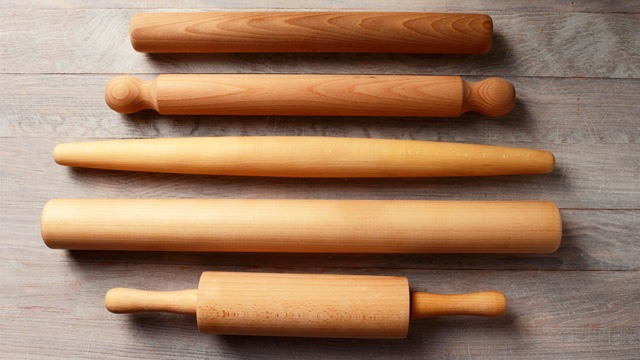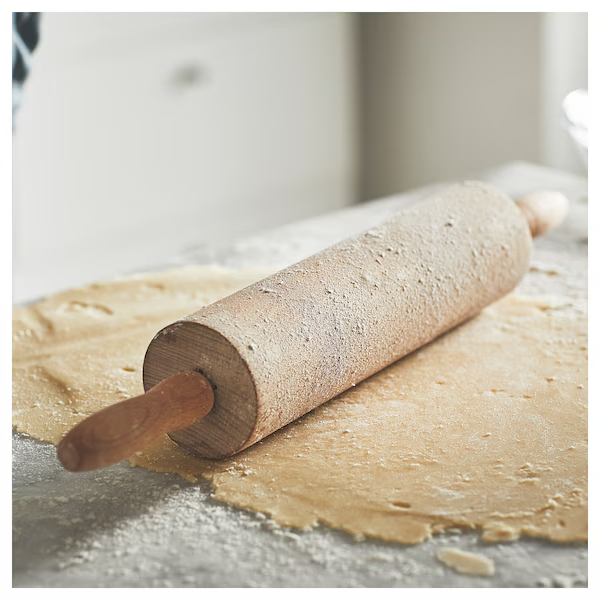When it comes to kitchen essentials, a rolling pin stands out as one of the most timeless and versatile tools. Used to flatten, shape, and even decorate dough, rolling pins come in various designs and materials, each suited for specific baking tasks. Whether you’re preparing delicate pastries, hearty pies, or homemade pizzas, understanding the types, history, and uses of rolling pins can elevate your baking game. Here’s everything you need to know about rolling pins and how to choose the right one for your kitchen.
A Brief History of Rolling Pins

The rolling pin has a surprisingly rich history that dates back centuries. It is believed that the first rolling pins originated in the ancient Etruscan society, located in what is now Italy, around the 9th century. Made from wood, clay, stone, or glass, these early rolling pins were simple, but they served the same purpose as modern versions: to shape and flatten dough. The tool was eventually adopted by the Greeks and Romans, spreading its usage throughout Europe and beyond.
In the 19th century, rolling pins took on a new form. J.W. Reed, an American inventor, introduced the concept of a rolling pin with handles. This small change allowed bakers to control the rolling process more precisely without getting their hands sticky from touching the dough. Since then, the rolling pin has evolved into a range of types, each designed to handle specific dough types and techniques.
The Different Types of Rolling Pins
Rolling pins can generally be categorized into three main types: rod, roller, and textured. Each type offers unique advantages, depending on the task at hand.
- Rod Rolling Pins Rod rolling pins are thin, cylindrical tools without handles. Often made of wood, these pins are popular in French and Asian kitchens. Their sleek, handle-free design allows for precise control over the dough, making them perfect for pastry work and tasks that require subtle adjustments, like rolling dumpling wrappers or pie crusts. Rod rolling pins can come with tapered ends, making it easier to pivot and rotate the dough with a gentle hand.
- Roller Rolling Pins Roller rolling pins are the traditional Western-style pin, consisting of a thick roller with two handles on either side. These pins are easy to use, especially for beginners, as they distribute pressure evenly across the dough. Roller pins are ideal for rolling out larger batches of dough for pizzas, pie crusts, and cookies, providing stability and control for all types of dough.
- Textured Rolling Pins Textured rolling pins are specialized tools with raised designs or patterns on the surface, often used for decorative purposes. These rolling pins create intricate designs on dough, making them perfect for special breads, cookies, or even pasta. They add a unique touch to baked goods, creating eye-catching patterns with minimal effort.
Choosing the Right Material for Your Rolling Pin
The material of a rolling pin affects how it performs, as each material has its pros and cons. Here are some popular materials used in rolling pins and what each one offers.
- Wooden Rolling Pins Wooden rolling pins are by far the most traditional and versatile. They’re durable, naturally non-stick, and gentle on all types of dough. Maple, cherry, and beech are popular wood choices, each offering durability and a smooth finish. The only downside is that wood can absorb flavors and moisture, so cleaning promptly and thoroughly is essential.
- Marble Rolling Pins Marble rolling pins are known for their cool, heavy nature, making them ideal for rolling out doughs that need to stay cold, such as puff pastry or pie crust. The cool temperature of marble prevents the butter in the dough from melting too quickly, which helps achieve the perfect flaky texture. However, marble pins are heavier and require careful handling, as they can be prone to breaking if dropped.
- Stainless Steel Rolling Pins Stainless steel rolling pins are sleek, durable, and easy to clean. They don’t absorb flavors or odors, making them perfect for versatile use in the kitchen. Stainless steel is also naturally cool, although it doesn’t retain cold like marble. Many bakers appreciate the lightweight feel and effortless rolling capability of stainless steel.
- Silicone and Plastic Rolling Pins Silicone and plastic rolling pins are lightweight and often non-stick, making them easy to handle. They’re ideal for beginners and are especially good for rolling sticky doughs, such as those used for sugar cookies or bread. However, they may lack the weight needed for thicker, tougher doughs, and some may not provide the same level of durability as wooden or stainless steel options.
Rolling Pin Designs Across Cultures

Rolling pins are used worldwide, with variations based on regional baking needs and traditions. Here are a few cultural types of rolling pins and their unique applications.
- French Rolling Pin: This type is a rod-style pin with tapered ends, allowing bakers to roll out dough using their palms. It provides excellent control, especially for delicate pastries.
- Belan and Chakla: In Indian cuisine, a belan (rolling pin) is used along with a chakla (a flat, circular rolling board) to make chapatis and rotis. This setup provides a stable base for rolling thin, round flatbreads.
- Oklava: This thin, tapered rolling pin is a staple in Turkish kitchens, particularly for making yufka, a paper-thin dough used in baklava and other pastries.
Using a Rolling Pin: Techniques and Tips
Learning how to use a rolling pin effectively can transform your baking. Here are some essential techniques to make the most out of your rolling pin.
- Keep Your Dough Cold: Cold dough, especially in recipes like pie crust and croissants, is less likely to stick and easier to roll out. A chilled marble or stainless steel rolling pin can help keep the dough cool.
- Light, Even Pressure: Apply gentle, even pressure when rolling to avoid overworking the dough, which can make it tough. For a balanced roll, place your hands towards the ends of the rolling pin and push down gently.
- Rotate Your Dough: Instead of constantly lifting and moving the rolling pin, rotate the dough by quarter turns. This helps maintain an even thickness and a perfect round shape, especially important for pies and tarts.
- Dust with Flour Sparingly: Too much flour can dry out the dough, so use it sparingly. Lightly dust the surface and the rolling pin, but add more only if necessary.
Caring for Your Rolling Pin

Proper care will ensure your rolling pin lasts for years. Here are some maintenance tips to keep it in top condition:
- Clean Gently: For wooden pins, avoid soaking in water as this can cause cracking. Instead, wipe it clean with a damp cloth and dry immediately.
- Season with Oil: Occasionally apply food-safe mineral oil to wooden rolling pins to prevent cracking and warping.
- Store Safely: Store your rolling pin in a cool, dry place to prevent any warping, especially if it’s made of wood.
Conclusion: Rolling Pins – A Timeless Kitchen Essential
The rolling pin is a timeless and versatile tool that has found a place in kitchens worldwide. From traditional wooden rods to modern stainless steel and marble designs, the variety of rolling pins available caters to every baker’s needs. Understanding the types, materials, and techniques for using a rolling pin can significantly enhance your baking experience, making it easier to achieve perfect pastries, cookies, and breads. Whether you’re a professional baker or a home cook, investing in the right rolling pin can make a world of difference in your kitchen endeavors.


